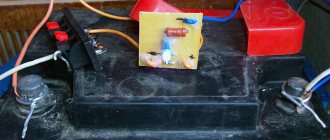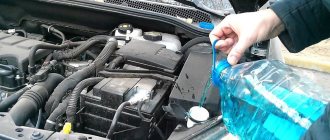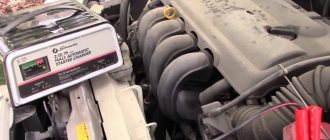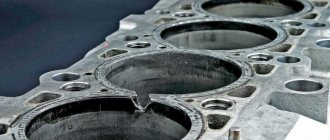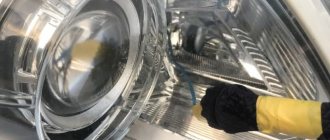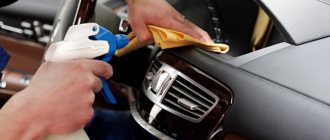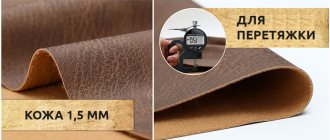The comfort of staying inside a car depends on a number of factors. The secret to complete tightness of the internal space is high-quality rubber seals that are installed on the doors. Wear of car door gaskets is indicated by drafts and squeaks from microcracks. You can wait until the first cold weather to carry out repairs, but then you will still have to attach a new rubber seal. We'll tell you how to glue the rubber seal on a car door and what to consider when choosing a part.
Application
Automotive lubricants have a wide range of applications .
Door seals
Lubricants are actively used to prevent cracks and wear of the sealing elements of doors, hood, and trunk . Experts recommend regularly treating these elements with silicone-based lubricants. This contributes to maximum sealing and the absence of extraneous sounds in the cabin. In addition, such lubricants are used to process all kinds of moving elements and surfaces.
Using silicone spray, door hinges and side window grooves are treated. For easy sliding of the hatch and reduction of loads on its surface, this treatment extends the operating time.
In addition, all surfaces treated with such means are protected from wear and damage, corrosion and exposure to external factors.
Locking mechanisms
Regardless of the make and model of the car, all vehicles have a decent number of locking mechanisms. All of them are exposed to external factors and mechanical wear. For example, condensation, accumulating in the secret of the element in winter, freezes, which makes it difficult or prevents the opening of doors, hood, trunk and other parts equipped with a lock. To prevent this, you need to regularly lubricate the mentioned mechanisms.
Using the nozzle for hard-to-reach places
Installation procedure
Before starting work, you need to remove the old molding, prepare the mounting area and begin installation.
Work is carried out at temperatures above 10 degrees Celsius. In the warm season, you can install it outside; in winter, you should choose a special insulated garage, box or auto repair shop. At low temperatures, the quality of adhesion will be extremely low.
We recommend watching a video on installing moldings:
Dismantling old elements
If the trim begins to move away from the door, then gluing it is pointless. It is recommended to remove the molding and attach a new or old one, but maintaining a tight seal.
To remove you will need:
- Powerful hair dryer.
- Long iron ruler.
- Drill with a rubber attachment for cleaning the surface.
- Masking tape.
- Degreaser.
- Old rags.
Wash and dry the vehicle.
- Painting tape is applied to the areas around the trim to protect the paint.
- Using a hairdryer, heat the molding evenly, starting from the peeling area.
- Place a ruler vertically under the free edge.
- Slowly move the ruler under the pad, periodically warming it with a hairdryer.
- When finished, remove any remaining tape.
- The remaining glue is sanded off with a drill and rags soaked in degreaser.
The fastening design has latches that will interfere with movement. Move the ruler a couple of centimeters forward and continue moving, periodically warming it up with a hairdryer. The clips are easily removed after removing the adhesive layer.
The surface of old linings requires cleaning if reuse is planned.
Preparation of tools and surface
Maximum set of tools:
- Roulette.
- Marker.
- Knife for cutting paper.
- Hair dryer.
- Masking tape.
- Degreaser.
- Antistatic wipes.
- Double-sided tape.
In the summer, you can heat the body by placing the car in direct sunlight. If there are special recesses for the linings, then markings are not required.
The surface is pre-cleaned and degreased. The area with peeling paint and traces of rust must be treated, the coating removed, painted and a protective layer of varnish applied.
Installation of prepared moldings
If the manufacturer does not initially provide for the presence of linings, then the operating technology is as follows:
- Carefully inspect the lower part of the door; installation of moldings is carried out on convex areas. You need to measure the required distance from the highest point to the bottom edge of the door.
- Make a mark on the resulting distance on two sides - in front and behind the door. Masking tape will visually limit the area of work.
- Treat the mounting points with a degreaser. On one side of the tape you need to remove the protective film.
- Heat the area for mounting the molding, apply a decorative element, and gently press down for good adhesion to the tape.
- Press evenly along the entire length of the lining, remove the protective layer of masking tape and proceed with installation on another door.
How to soften rubber at home if it has become stiff
Home{amp}gt; Technologies{amp}gt; How to soften rubber
Rubber is considered one of the most common materials today. Over time, the basic characteristics may decrease significantly. A fairly common question is how to soften rubber.
This procedure can be performed independently at home, it is important to follow all recommendations
At home, you can soften rubber by using various materials. The most widespread are:
- Ammonia.
- Kerosene.
- Castor oil and silicone.
High temperatures also cause the rubber to become softer, but wear resistance decreases.
Kerosene
When considering how to soften rubber, many people pay attention to the possibility of using kerosene. Such a substance can restore elasticity.
Ammonia
This substance is widely used and can also make the product softer. The procedure looks like this:
- Select a container of suitable volume.
- Ammonia is diluted in water to obtain the required solution.
- The product is placed in the solution for an hour to soften.
- After this, the softened element is removed and washed with clean water.
Ammonia
Drying is carried out at room temperature. It is worth considering that high and low temperatures always have a negative impact on the condition of the rubber.
Silicone and castor oil
A short-term effect can be achieved by using silicone and castor oil. Among the application features, we note the following points:
- Silicone has only a temporary effect. It can be purchased in specialized stores.
- After lubrication, you need to wait a while. The silicone can be absorbed into the structure, making it more flexible.
After half an hour the rubber will be ready for use. It is worth considering that the achieved effect will be temporary
When considering what can be used to soften such material, you can pay attention to castor oil
Origin of rubber
One of the most useful plants for the history of mankind was and remains the Hevea - a tree from the sap of which rubber is made. It grows in the tropical climates of South America and Southeast Asia. Initially, Hevea came from Brazil: Indians living in the Amazon jungle have long used the juice of this plant for medical (disinfection of wounds and stopping bleeding), industrial (waterproof shoes and raincoats) and even gaming purposes. In particular, it was the Indians who created the first rubber ball for games similar to modern football.
The British brought Hevea from South America and began planting it in their Asian colonies at the beginning of the 20th century. It was then that plantations appeared in Thailand, Cambodia, Malaysia, Indonesia and Vietnam. At the moment, the largest supplier of natural rubber is Thailand.
Types of lubricants
When wondering how to lubricate rubber bands, you need to have an idea of what types of lubricants are available to motorists today and what are the advantages and disadvantages of each type. This should be discussed in a little more detail.
Spray for treating seals
Paste products
These are thick plastic mixtures applied using napkins. Paste-like products are used when treating rubber car seals , diving equipment and household appliances.
The disadvantages of such lubricants include the difficulty of lubricating hard-to-reach places.
Care, seasonal recommendations
The main damage is caused by bad weather, pollution and constant slamming of doors. If you do not clean the rubber bands, then over time the dirt will begin to corrode the rubber and microcracks will appear. Abrasive wear occurs in the summer from dust and sand. Therefore, regular cosmetic care and lubrication are required.
As a preventive measure, you can use silicone aerosol, periodically spraying the surface of the seal. The doors should be closed during this procedure only after the substance has completely dried.
It is also important when parking to choose places where the driver’s side is not ventilated. After all, this is the door that is most often used. If the seal still freezes, then you can get into the car through another door or warm up the vehicle. If you have such a problem, it is better not to pour hot water on the door.
Where to buy and how much does it cost?
You can buy a good fire extinguisher for your car at any specialized store or on the Internet. The price depends on the characteristics of the device. The cost of powder products is from 250 to 600 rubles. They are used to extinguish fires of all categories. They activate quickly: the jet begins to erupt within 2 seconds. With their help, you can extinguish electrical equipment and any substances if the combustion temperature does not exceed 1000 degrees.
The cost of carbon dioxide fire extinguishers is 2 times higher - from 450 to 3000 rubles. They are less popular among drivers due to their heavy weight - approximately 14 kilograms. In addition, they have a rounded bottom and take up a lot of space in the car interior. The contents of the cylinder are carbon dioxide. The condition of such devices needs to be monitored, as they can randomly release foam if they are kept at elevated temperatures for a long time.
Aerosol devices are not used when extinguishing electrical equipment, so they are not widely used. A five-liter cylinder costs 400-450 rubles.
For a car, a powder device for 300-400 rubles is best suited.
Door seal functions
Rubber sealing strips provide comfort in the car interior, and also thanks to them:
- Sound insulation is provided;
- additional sealing is created;
- the body is not damaged when closing/opening doors;
- there is no cotton when closing;
- body parts are fixed and shaking is reduced while the car is moving;
- Dirt, moisture, dust do not seep inside;
- thermal insulation is provided;
- The vehicle is protected from drafts;
- protection of individual body elements: openings, sills, pillars, roof from rapid wear.
When a hole appears in the path of the car, the compactor balances individual parts of the body that are at different levels. In winter, rubber bands prevent the doors from freezing to the body.
Restoration of sealing fragments is necessary after accidents, wear or mechanical damage.
Before repairing the rubber seal on a car door, you must carefully study the instructions, otherwise you will have to contact a service center.
Car door hinge repair
A very common defect is sagging door hinges. You can tell that the hinges are sagging by the following signs:
- more force is required to open and unlock doors;
- uneven gaps between the doors and the car body;
- metallic grinding noise when driving over uneven surfaces;
- scratches on the sills.
If you notice one or more of the above symptoms, you should have your car door repaired.
In case of severe damage and deformation, the hinges must be partially or completely replaced. A partial replacement involves changing only the axle.
Adjusting the hinges with your own hands is carried out in several stages:
- Remove the opposite half of the lock.
- Determine the correct vertical position of the doors.
- If there is a defect, loosen the fastening. Then raise or lower the door to the desired level by placing metal plates under the hinge. If the edge of the door is pulled up, then the plates are needed under the top hinge, and vice versa.
- Now determine the correct horizontal position of the doors. If the door is recessed into the body, then move the hinges closer to you, and vice versa.
Check the opening and closing of the door - there should be a soft bang.
To extend the life of door hinges, regularly lubricate the mechanism and tighten the bolts. Do not lean on the door or hang heavy objects on it.
Dangerous but effective
If you don’t have hydrocarbon lubricant on hand, in winter you can protect your doors from freezing using a well-known compound called WD-40. Experts recommend always carrying it in your car in order to be able to defrost certain moving joints, as well as clean moisture from parts that are more susceptible to corrosion than others. If your door seals freeze, just apply a thin layer of WD-40 to them to forget about this problem for several days.
The lubricant comes in the form of a spray, so there will be no problems using it. Interestingly, each jar is equipped with a thin tube, which allows you to work in hard-to-reach places, so the composition can be easily applied under the seal from the outside, where moisture also often accumulates. However, you should be very careful as WD-40 can cause serious damage to the rubber and plastic components used in the car. Therefore, it should only be used as a means of emergency rescue, and as soon as possible, go to the store to buy silicone-based lubricant.
Tips for the whole year
There are several recommendations regarding extending the service life of door seals that are relevant throughout the year.
All 4 seasons should adhere to these rules. Namely:
- keep your rubber bands as clean as possible;
- remove any abrasive particles;
- do not leave seals wet;
- do not close the machine tightly if it is damp inside;
- use body chemicals carefully;
- read the composition of car cosmetics before applying it to rubber parts;
- After cleaning the dirt, wipe with a damp cloth and then wipe dry.
Moisture is the most dangerous in winter. It can freeze, form hard crystals, and gradually destroy the rubber.
Please note that door rubbers often use metal fasteners and frames. They are unlikely to be made of stainless steel. And if moisture remains there, the process of rust formation will not take long to occur.
Aggressive chemistry can corrode rubber, which also does not lead to anything good.
Heating is an effective method
Containers with prepared water for boiling rubber products
There are situations when the rubber element, due to its hardening, is difficult to remove from structural parts. You can achieve the desired result by heating the rubber with a stream of hot air using a hair dryer. When exposed to high temperatures, the material will become softer and can be pulled out of the part.
An element that is too “stiff” is softened by boiling in salted water. The technology is as follows:
- fill the container with salted water;
- let the liquid boil;
- place the rubber element in boiling water for 10 minutes;
- remove the rubber and quickly use it for its intended purpose.
This method is quite effective, but has a short-term effect. Once cooled, the rubber will become hard again.


